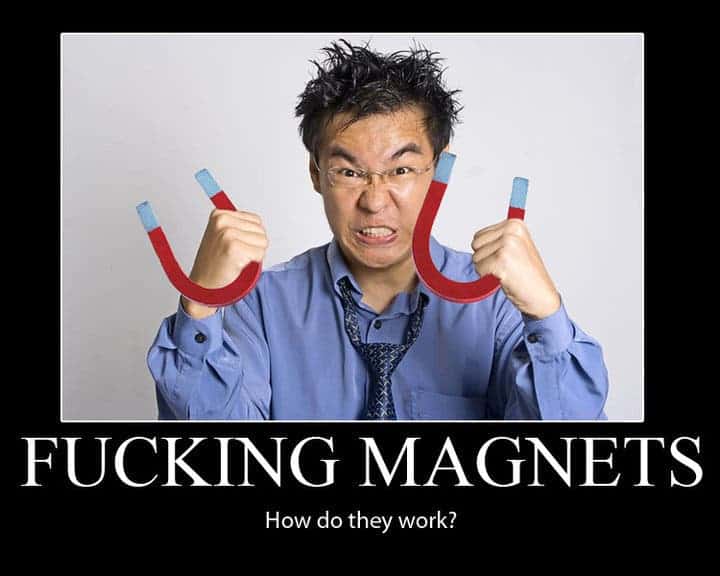According to a recently published study, computer processor chips made out of nano-scale magnets could yield an efficiency close to the limit imposed by physics.
A 100% efficiency is impossible in practice, since any mechanical or electrical process requires more energy than it theoretically needs because of dissipation, be it heat (most of the time) or even sound. Nana-magnetic computing devices, although still semi-theoretic, are very close to this brink simply because they don’t a need physical medium to propagate information, and thus work on a much lesser loss of energy.
Conventional computer chips work by moving electrons around a circuit; which leads to energy getting dissipated along the way. Actually, the energy used by most commercial processors is much higher than they would theoretically need.
Nano-magnetic chips don’t need a physical medium
Nano-magnetic chips, however, use magnetic fields to transfer information without any physical interaction, which resolves many efficiency related issues due to propagation through wires. Made out of magnets similar to the ones you can find in a simple home refrigerator, tiny slices are packed together such that their magnetic field interacts. One single slice measures about 100 nanometers and information is transferred according to how the their poles. One pole points to , the other to 0.
“They’re actually maximally efficient, in the sense that they use up only the energy that is theoretically required to carry out a computation,” said electrical engineer Brian Lambson of the University of California at Berkeley.
In 1961, one of the most famous IBM scientists Rolf Landauer stipulated a principle which argues that every bit of information transfer will always be accompanied by heat dissipation, small as it is. In his theory, Landauer stipulated a minimum energy dissipation which results in a irreversible binary operation. For one bit, the energy lost is kT ln 2 , where k is Boltzmann constant and T is the absolute temperature of the circuit.
Closing on Landauer’s limit
Most modern computer chips release even a million times Landauer’s limit value for a computation.
“Magnetic systems are unique in that they have no moving parts,” Lambson said. “Moving parts are really what dissipate a lot of energy in physical systems, whether it’s moving electrons or physical material.”
You’ve started to get really interested in these nano-magnetic chips now, haven’t you? Well, a practical 100% efficient one is still in research, and the technology is still in its infancy. But to see how little energy the chips might consume, Lambson’s team estimated how magnetic fields would change during computation then calculated the energy required to make those changes. The results, published in Physical Review Letters, were staggering.
“We were surprised to see that they were almost exactly the same,” Lambson said, referring to how intimately close their results came to Landauer’s limit. Many scientists, however, believe that Landauer’s limit may not be directly related to the limit of efficiency. More research is needed, of course, but the concept behind it is indeed highly exiting.
The future sounds efficient
According to DOE, computer servers in the U.S. account for more than 50 billion kilowatt hours of electricity every year. That’s three percent of total U.S. consumption. With a scale like that, even a single-digit increase in energy efficiency would be significant.
Imagine what could be achieved with the an entire new generation of nano-magnetic chips? Food for thought.
via Wired










